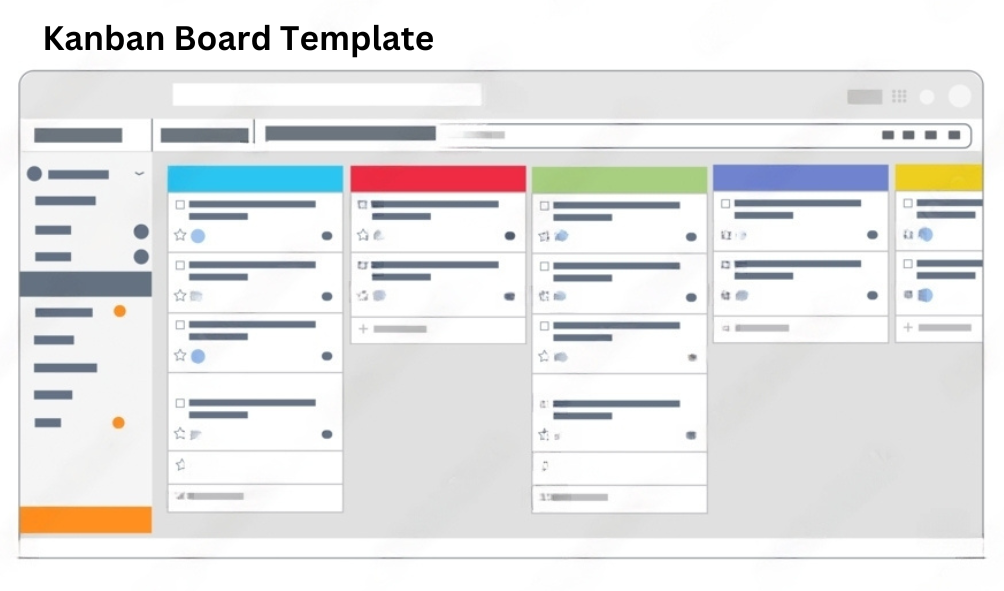In the fast-paced world of project management, organizations continuously seek methods to enhance productivity and collaboration. One of the most effective tools for achieving these goals within Agile methodologies is the Kanban board. Originating from the Toyota Production System, Kanban has evolved into a vital framework for managing work in various industries, offering a visual approach to workflow management.

This article explores the power of Kanban boards in Agile methodologies, highlighting their key features, benefits, and best practices for implementation.
Understanding Kanban boards
A Kanban board is a visual representation of the workflow, designed to illustrate how tasks progress from initiation to completion. Typically, a Kanban board consists of columns that represent different stages of the process (e.g., To Do, In Progress, and Done) and cards that represent individual tasks or work items. This simple yet powerful tool allows teams to visualize their work, track progress, and identify bottlenecks in real-time.
Key Features of Kanban Boards
1. Visual Workflow Management
Kanban boards provide a clear, visual overview of the entire workflow. By placing tasks in different columns, teams can quickly assess the status of projects and understand the workload at a glance.
2. Limit Work in Progress (WIP)
A fundamental principle of Kanban is limiting the number of tasks in progress at any given time. By enforcing WIP limits, teams can focus on completing tasks before taking on new ones, reducing multitasking and improving overall efficiency.
3. Continuous Improvement
Kanban boards encourage teams to continuously analyze their processes and identify areas for improvement. Teams can hold regular retrospectives to discuss what is working well and what needs adjustment, fostering a culture of continuous improvement.
4. Flexibility and Adaptability
Kanban boards are highly adaptable to different team structures and workflows. Teams can customize their boards to fit their specific processes, making it easy to implement Kanban in various contexts.
Benefits of Using Kanban Boards in Agile methodologies
1. Increased Visibility and Transparency
One of the primary benefits of Kanban boards is the enhanced visibility they provide. Team members can see the status of all tasks, which fosters transparency and collaboration. This visibility helps prevent misunderstandings and ensures that everyone is aligned with project goals.
2. Improved Workflow Efficiency
By visualizing tasks and limiting WIP, Kanban boards help teams streamline their workflows. Teams can identify bottlenecks and inefficiencies more easily, allowing them to address issues proactively and maintain a steady flow of work.
3. Enhanced Team Collaboration
Kanban boards promote collaboration among team members by providing a shared understanding of the work at hand. Teams can easily discuss tasks during stand-up meetings or other collaborative sessions, facilitating communication and teamwork.
4. Faster Delivery of Value
With improved visibility and workflow efficiency, teams can deliver value to customers more quickly. By focusing on completing tasks before taking on new ones, teams can ensure that they are delivering high-quality results consistently.
5. Better Resource Allocation
Kanban boards allow teams to track workloads and resource allocation effectively. By visualizing who is working on what, teams can make informed decisions about task assignments and redistribute work as needed to balance workloads.
Best Practices for Implementing Kanban Boards
1. Define Your Workflow
Before setting up a Kanban boards, it's essential to define the workflow. Identify the stages that tasks go through from start to finish and create columns on the board to represent each stage. This clear structure will help the team visualize the entire process.
2. Establish WIP Limits
Set WIP limits for each column to prevent overloading team members and ensure that tasks are completed efficiently. Adjust these limits as necessary based on team capacity and workflow dynamics.
3. Use Clear and Descriptive Cards
Ensure that each task card contains enough information for team members to understand what needs to be done. Include details such as task descriptions, deadlines, and responsible individuals to provide clarity.
4. Regularly Review and Adapt
Conduct regular reviews of the Kanban board and the workflow to identify areas for improvement. Encourage team members to provide feedback on the process and make adjustments as needed to optimize performance.
5. Leverage Digital Kanban Tools
While physical boards are effective, digital Kanban tools additional benefits, including remote access, real-time updates, and integration with other project management tools. Consider using digital platforms to enhance collaboration, especially for distributed teams.
Conclusion
Kanban boards are a powerful tool within Agile methodologies, offering teams a visual and flexible approach to managing workflows and improving efficiency. By enhancing visibility, promoting collaboration, and enabling continuous improvement, Kanban boards empower teams to deliver value to customers more rapidly and effectively. As organizations continue to adapt to the demands of a dynamic business environment, embracing the power of Kanban boards can lead to successful project outcomes and sustained growth. Whether you are new to Agile or looking to refine your existing processes, implementing Kanban can help you visualize success and achieve your goals.